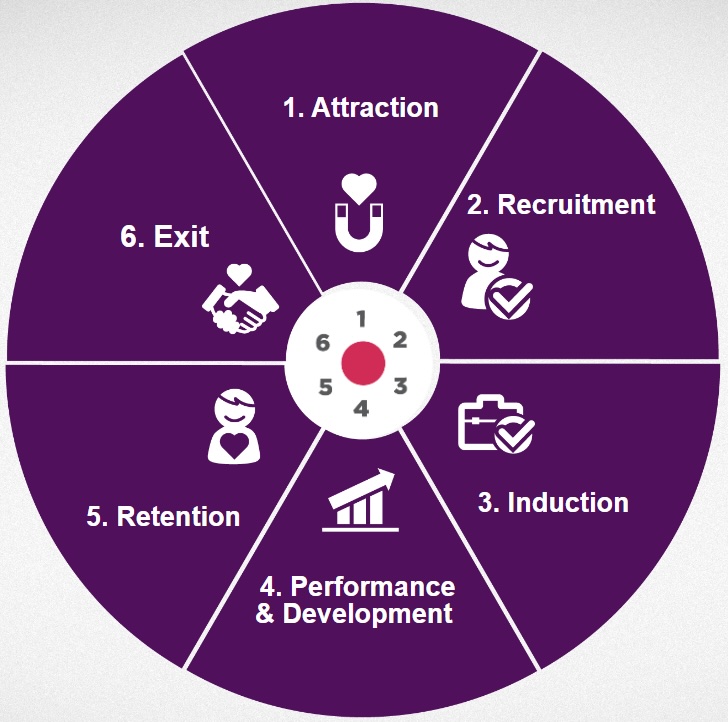Hello CIPD Community!
I’ve rounded up 18 examples of prompts for generative AI to help practitioners in their work, organised around the employee lifecycle.
Have you tried these prompts or something similar?
What other prompts have you found useful for your work?
It would be good to share with others what has worked for you, and lessons learned. Do share below or if you’d prefer to be more discreet, please write to me at research@cipd.co.uk (Subject: generative AI prompts for HR). This is one of several discussions I’d love to have here with members on how we can support you in using AI confidently and safely to save time and achieve greater things!
To get started with generative AI: Go to one of the generative AI chatbots like ChatGPT, Copilot in Bing or Gemini. Or paid-for Copilot for Microsoft 365 if you have it (lucky you!). Once you’ve registered and logged in, paste one of the prompts.
Two safety warnings:
- Don’t share any sensitive information with generative AI chatbots unless you’re absolutely sure the information you share won’t leave your company and leak into the public domain.
- Do review the outputs and check sources, especially where accuracy is important.
For more tips on writing prompts, check out our Bitesize Research on how to use ChatGPT as a HRM assistant.

1. Attraction
1.a. (Summarise) What do people think about working at <my company name>? List examples of positive and negative comments. Include references.
1.b. (Recommend) What should be the top five employee propositions for attracting <position to be advertised> to work at <my company name>? Ask me for details about <my company name> and <position to be advertised> before suggesting.
1.c. (Draft) Write 600 words to say why <position to be recruited> should work for <my company name>. Please ask me for details you need about <my company name>.
2. Recruitment
2.a. (Draft) Draft a job description for <position to be recruited>. Before you start drafting, ask me questions about the job and the company. Include the details I provide in the job description.
2.b. (Recommend) Can you tell me how to make this job description more inclusive and aligned to <my company name>'s employer brand? [Describe employer brand, then paste job description]
2.c. (Brainstorm) Can you suggest ways to assess the competencies for <position to be recruited>. Let me know what details you need about the job.
3. Induction
3.a. (Draft) Create an induction checklist. Customise it for <the role>.
3.b. (Translate) Translate this welcome letter to German.
3.c. (Recommend) Below is a list of new joiners and their hobbies. Can you please pair people with similar interests?
[List pseudonyms and their hobbies]
4. Performance and development
4.a. (Summarise and explain) What are typical objectives and key results (OKRs) for <role>? Why are these relevant to the role?
4.b. (Analyse) I’d like you to do a skills gap analysis for <role>. I’m going to share the job description for this role and then I’m going to share an assessment of someone’s competencies. Do ask me questions to improve the analysis.
[Paste job description and press Enter. Then paste the assessment and press Enter. Don’t enter any sensitive information unless you’re sure it’s not going in the public domain]
4.c. (Recommend, following on from Analyse above) Can you suggest courses or other development opportunities for this individual? For courses, please suggest something they can join online or somewhere near <insert location>.
5. Retention
5.a. (Summarise and recommend) What are the principles of a good employee retention strategy? Ask me questions to help me tailor these principles to <my company name>.
5.b. (Brainstorm and recommend) What metrics should I consider for tracking retention? What data sources do I need? Ask me questions to help me choose the best metrics for my situation.
5.c. (Analyse, organise, summarise) You're a management consultant. I’m going to give you feedback about what employees think about the company. Don’t start analysing until I give you further instructions. Is that clear?
[Let generative AI chatbot confirm. If it starts analysing, tell it to stop. Then paste anonymised employee feedback with sensitive details removed. Press Enter]>
Please organise the feedback by Positive, Neutral and Negative. [Press Enter]
Tell me five key themes from the feedback and quote a few examples to support this. [Press Enter]
6. Exit
6.a. (Draft) Draft a response to a resignation email. Ask me questions to help me customise my response.
6.b. (Summarise and recommend) I’m an HR Manager. I want to encourage employees who leave our company to become our brand ambassadors. What strategies should I consider for building a positive relationship with ex-employees? Please ask me questions to improve your response.
6.c. (Recommend) I’m an HR Manager. Below are my exit interview questions for <role>. [Add other relevant contextual information.] Can you suggest refinements or other questions I should ask?
Now, I'd love to hear from you.
Thank you.
